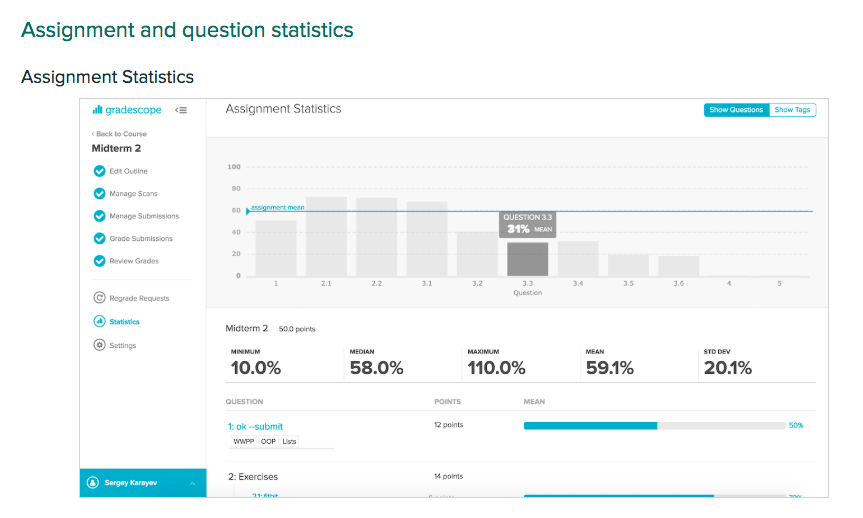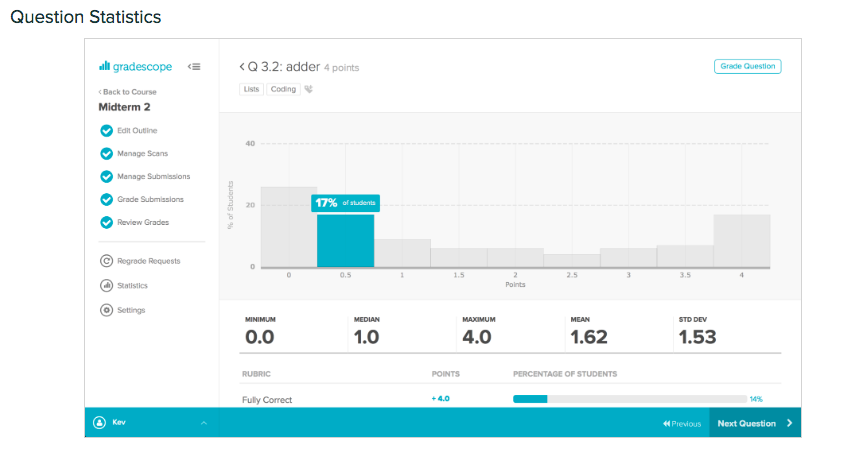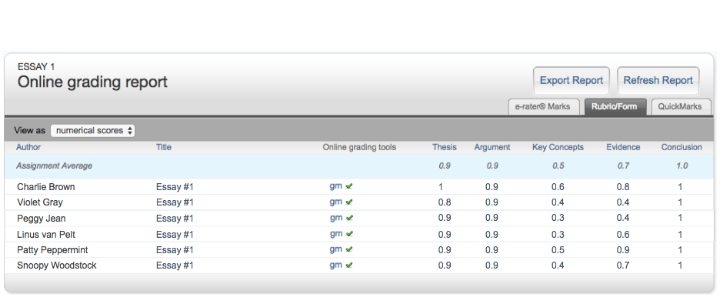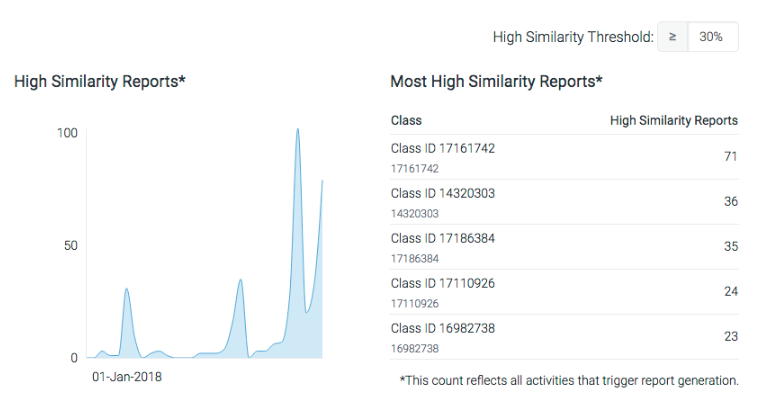Let’s talk about student data insights. Educators (implicitly and explicitly) track data at many points of teaching--and the data you gather can then guide instruction and improve student learning.
Sensing if the light bulbs are appearing over students’ heads in a classroom discussion or noticing whether or not your students are exhausted and stressed that particular day is core to teaching efficacy. These data points inform an educator on whether to review material in “real-time” or switch directions and pull up a different lesson plan to match your classroom’s energy.
Data insights carry on through assessment via assignments, quizzes, and exams, transforming assessment from an endpoint into a milestone in student learning. What kinds of questions did 95% or 5% of your students get correct (aka were your questions effective in sussing out what your students learned)? How many times was a particular rubric applied (aka what concepts were consistently overlooked)? What was the average score on that particular assessment (aka was your test too easy)?
These insights then help you teach more effectively by shoring up specific and relevant student learning gaps.
In Turnitin’s suite of solutions, Feedback Studio and Gradescope provide student data insights, helping educators to pinpoint and support students who are on the cusp of learning.
If you use Gradescope, item analysis features and increased grading efficiency may encourage you to provide more assessments, which in turn, provide educators with further data to provide specifics insights into ongoing student learning.

Gradescope provides instructors with detailed statistics on overall class performance with the click of a button, enabling you to assess not only students but your own exam design. It’s critical to understand student learning and it’s equally important to ensure that exams assess learning with accuracy.
Additionally, detailed insights into each question on your assignment or exam help inform which concepts your students understand and which concepts require more support to bridge student learning gaps.

It’s data, too, that helps you plan interventions with students before higher stakes testing later on in the academic year, whether it is a final exam or essay or standardized tests. Empowering students before it’s too late in the learning process helps students feel seen and upholds the integrity of learning, in addition to improving outcomes. Students are also empowered because they are shown their own learning and development progress, a key component in their academic journey.
Feedback Studio provides instructors with data-driven insights into student learning.
For example, in the online grading report, instructors can see which Quickmarks (reusable drag-and-drop comments) sets have been utilized most or least often to diagnose student learning gaps and concepts that need bolstering. Likewise, you can see the grade you gave students for each rubric category--information that helps instructors understand what it is students know or don’t know. Rubric scores, as seen below in the image, help instructors understand whether, for instance, students need help with thesis sentences or how to write supporting arguments. And e-rater marks provide data insights on grammar error patterns.

Instructors can also view a summary of each student’s similarity score to understand classroom trends when it comes to understanding academic integrity. You can also see if students viewed their grades and feedback, important indicators of student engagement.
Students don’t often tell you what it is they don’t know--because sometimes, in the midst of learning, it can all feel overwhelming. But having access to student data insights can cut to the heart of the matter--and help instructors help their students, especially those who are struggling and feeling lost, gain better traction with concepts in time for their final assessment.
Feedback Studio also provides institutional statistics, which include the total number of submissions over a span of time, the number of Similarity Report submissions, the number of submissions higher than a specified similarity score, as well as the number of submissions in which feedback was utilized. Data insights provide granularity from integration to instructor to individual classes so that administrators have transparency in their entire institution.
What percentage of your students have high similarity report scores? And which classes have the highest number of high similarity reports? Which classes are using feedback on student submissions? And which classes have the highest number of submissions with feedback? Find out by using Feedback Studio’s institutional statistics.

With more transparency into course-level data, you are better prepared to improve curricula and drive better outcomes. These statistics can pivot into action for administrators; if administrators see that certain instructors are active users, they can encourage active users to serve as a mentor or provide additional professional development to cohorts with lower usage statistics.
Whether you are using Gradescope or Feedback Studio, find out if there is a correlation between low feedback use and underperformance and encourage formative feedback to direct more meaningful learning in your curriculum. Data too can inform proactive programs for academic integrity offices in order to prevent future misconduct.
Who benefits from feedback and assessment? It should be students--and when you utilize assessment both to provide feedback and gain data insights to refine instruction, students again benefit from an assessment.
We’re always looking to evolve the ways in which our software can provide data insights so that we at Turnitin can support teachers to achieve pedagogical best practices. Whether it’s upcoming functionality like real-time in-doc formative feedback or enhanced item analysis, we hope you feel supported.




